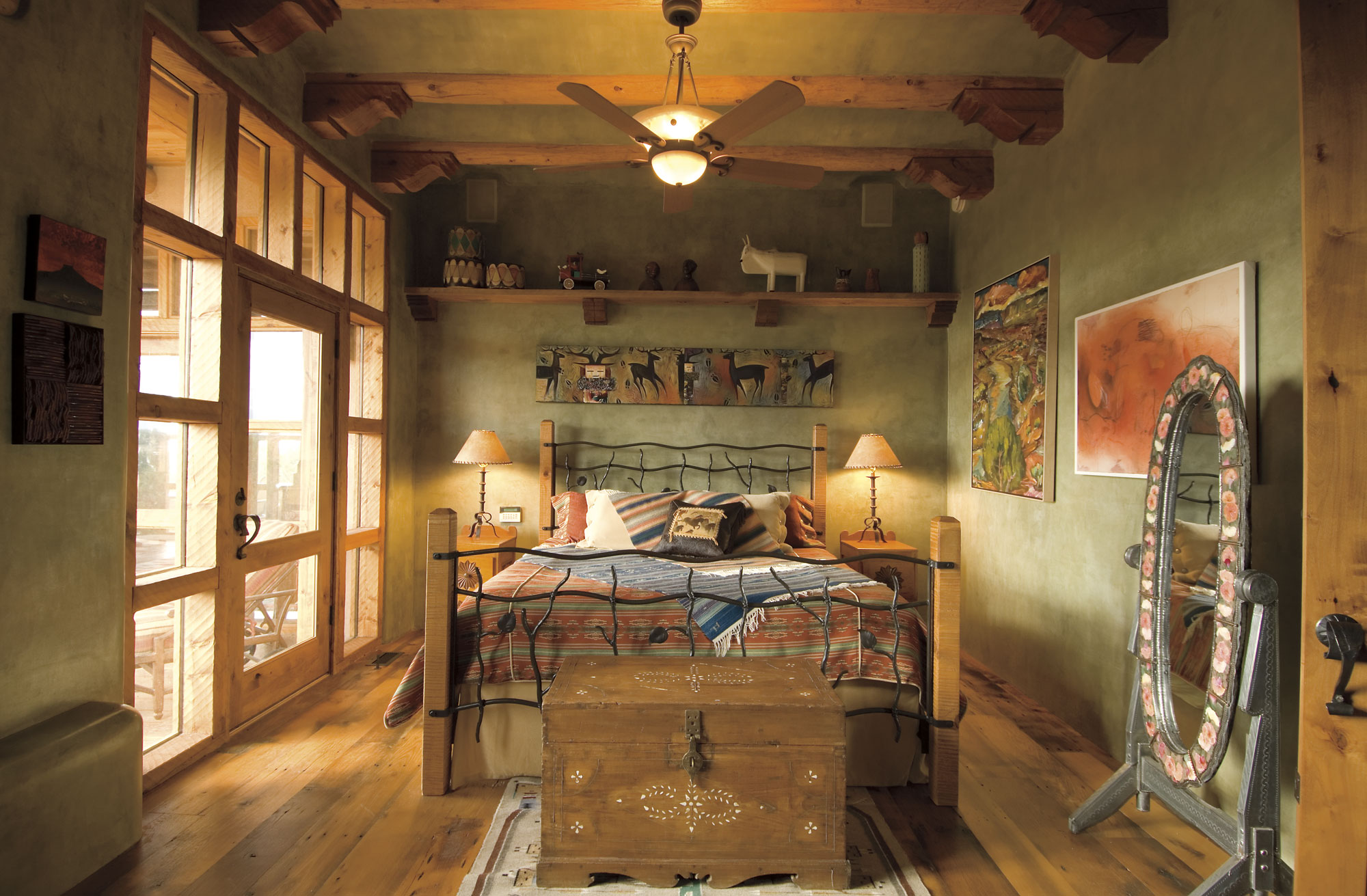
01 Sep Casa de Arte
WHEN TWO PASSIONATE ART COLLECTORS COMMISSIONED Santa Fe architect Robert (Bob) Ritter to design their home, the first thing he asked his clients to do was photograph all the works in their collection.
“We told Bob from the beginning that the focal point of this home was the art, but that we also wanted to accommodate the environment,” explained the homeowners.
The exercise revealed a sizeable and intricate collection of historic and contemporary artists, ranging from Allan Houser sculpture to William Penhollow Henderson furnishings to Native American fetishes to landscape paintings by John Sloan. The owners wanted the space to display their beloved works of art without creating a sprawling ranch; in response the architect designed a modestly sized home with thoughtful attention to placing each work of art.
Set low on a hillside within the exclusive Las Campanas community just outside Santa Fe, the adobe house is a classic form of Pueblo Revival Style, according to Ritter. After 25 years, Ritter has left his mark on residential architecture of the Southwest. He’s a dedicated traditionalist when it comes to utilizing authentic materials and begins each project with intricate, perfectly scaled, hand-drawn renderings. He is of ranch stock, a fifth-generation Texan from Amarillo with a Renaissance approach that honors the culture of place represented within the built environment in the states where he practices — Arizona, California, Colorado, New Mexico and Texas.
“You can’t express Santa Fe Style,” said Ritter. “It really is a palette of materials that consist of adobe, stone, plaster, mud and wood.”
While the basic components of the residence in Las Campanas sound simple, the application of these materials is anything but plain. The level of detail in this collectors’ residence equates to a little jewelbox of master craftsmanship. Stepping into the shade of the front portal, the unique design of the home is evident. The whimsically carved vigas and corbels from Taos frame a handmade door that opens into a hall where the cool, cosseted temperature of the adobe wraps around a guest on a hot day. The warm neutral colors of the walls and the filtered natural light are a gentle embrace.
From the entrance, the house moves subtly down with a wide, short set of stairs to a grand hall of art. Lit by a clerestory that runs nearly the length of the house, the passage is slightly wider than a typical hallway in order to display some of the homeowners’ most beloved works. At the far end a large niche arches around a classic Allan Houser sculpture, As Long as the Water Shall Flow, leading to the private wing of the house, the master bedroom and guest room. But for the most part, this space functions like a gallery, generating interest and conversation about the artwork, and is skillfully designed to wrap around other areas of the home effortlessly framing kitchen and family room, great room and formal dining area.
Both attorneys in a West Coast urban center, the home-owners have visited the Santa Fe area for almost 30 years. It was the art that initially drew them here; they’d collected the Urban Realism of painter John Sloan and then discovered his New Mexico landscapes with pinks, reds, yellows, purples. They called it his “fantasy” work and were so intrigued that they came to New Mexico to experience what the artist had seen in his time.
“The colors of those paintings brought us here,” said the lady of the house. “When we got here we realized that the scenes [Sloan] painted were real and we fell in love with it.”
Over the years the couple planned to retire near Santa Fe and structured vacations around visits to Indian Market and other local events. They were introduced to Robert Ritter through friends and engaged him to design their own home for his artistic approach.
A fine artist in his own right, Ritter responded to the clients’ art-centered life by creating an intricate handcrafted residence. The final outcome is a family home that the owners liken to a piece of art, as highly esteemed as any piece in their collection.
“The thrill of working with Bob is that because of his background as an artist he knew what we were looking for exactly,” said the homeowner. “He set the house to the environment so that the sun fills our bedroom in the morning and then moves through the house the rest of the day, matching the way we live.”
Surrounded by juniper hills and a 360-degree-vista of the iconic high-desert sky, the couple is reminded of the artful images that inspired their journey to New Mexico many years ago. Immersed in a place they love, theirs is truly una casa de arte, a house of art. Here, the Sangre de Cristo Mountains frequently display that signature crimson hue of desert sunsets at 7,000 feet above sea level. And like the paintings that depict the colors of these mountains, adobe and hills, the landscape that encompasses their home has inspired a new rhythm of living, centered on a quiet pace in a country setting as vivid as any work of art.
Seabring Davis is the editor-in-chief of Western Art & Architecture. She has written about regional architecture for the last decade.
- The kitchen is layered with works of art, from hand forged hardware on the cabinetry to the Gustave Baumann-inspired mural made of rolled tin and used as a backsplash behind the range.
- A wall of nichos in the great room display a growing collection of contemporary sculpture and pottery. Allan Houser’s bronze Chant of the Rio Grande takes center stage, while impressive works from glass artist Marvin Oliver and a dramatic Irvin Trujillo rug complete the space.
- Custom-made cabinetry displays hand painted drums and a collection of Native American fetishes.
- The whimsical colors of an antique bench offer a light contrast to the hand cut cedar of the deep-set adobe windows on this tasteful home at Las Campanas.
- A series of vigas frame a clerestory above the gallery hall that allows for natural light to filter over framed artwork and dramatically offset a treasured Allan Houser sculpture entitled “As Long as the Water Shall Flow”.
- Created to display the owners’ Native American curios, fetishes, rare books, prints, antique children’s chairs and hand painted drums, this office is a personalized monument to the collectible history of the Southwest. The desk and cabinets were made by Sergio Tapia, using the antique tools of William Penhollow Henderson, from Spanish cedar and inset with purple heartwood.
- A primitive Dan Namingha painting complements the earthen colors of the custom-made blankets from Navajo weaver Lisa Trujillo in the master bedroom.
- Even in the master bathroom nichos for unusual retablos and a Tammy Garcia sculpture were considered in the design of the house.






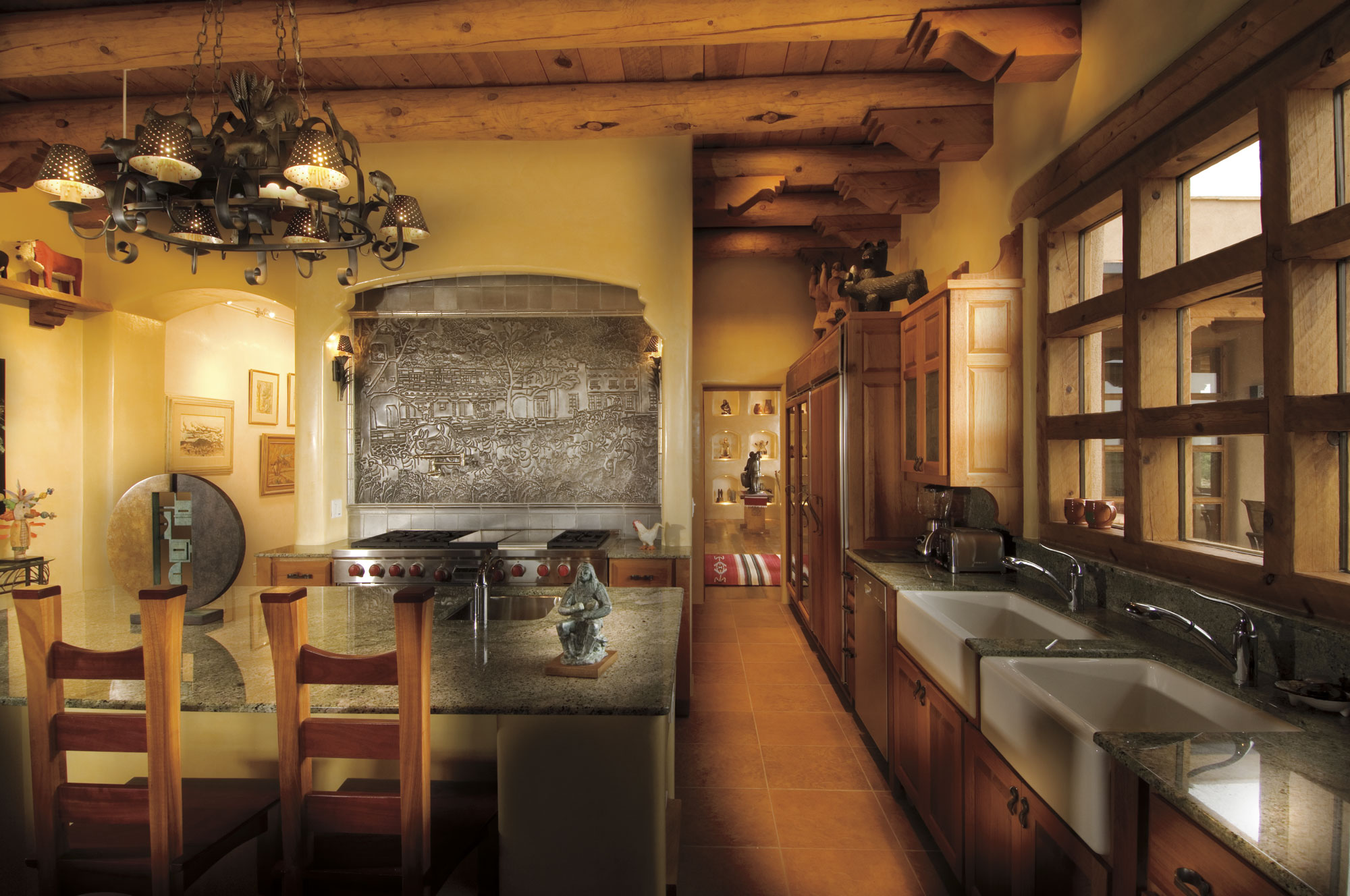
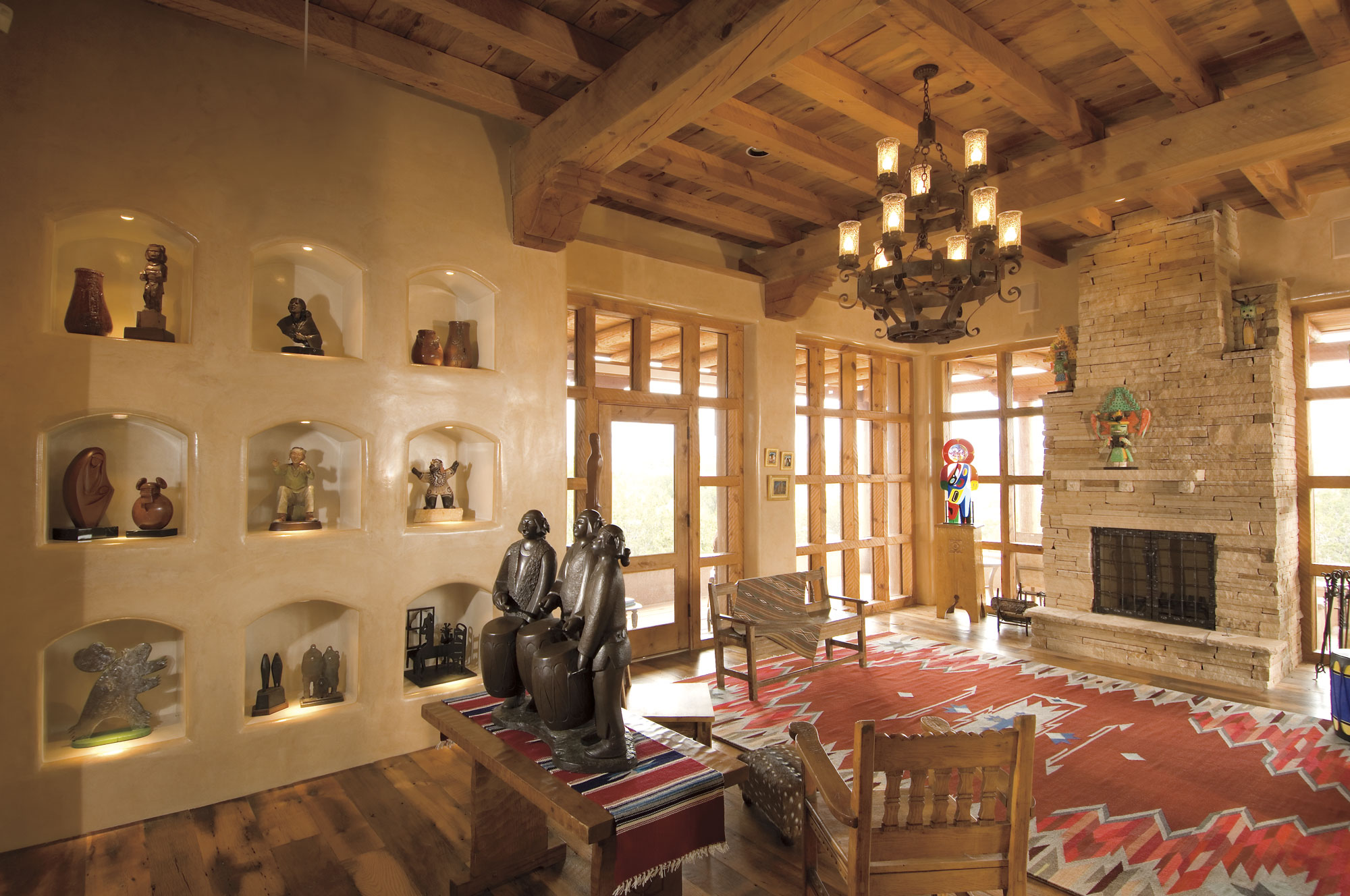
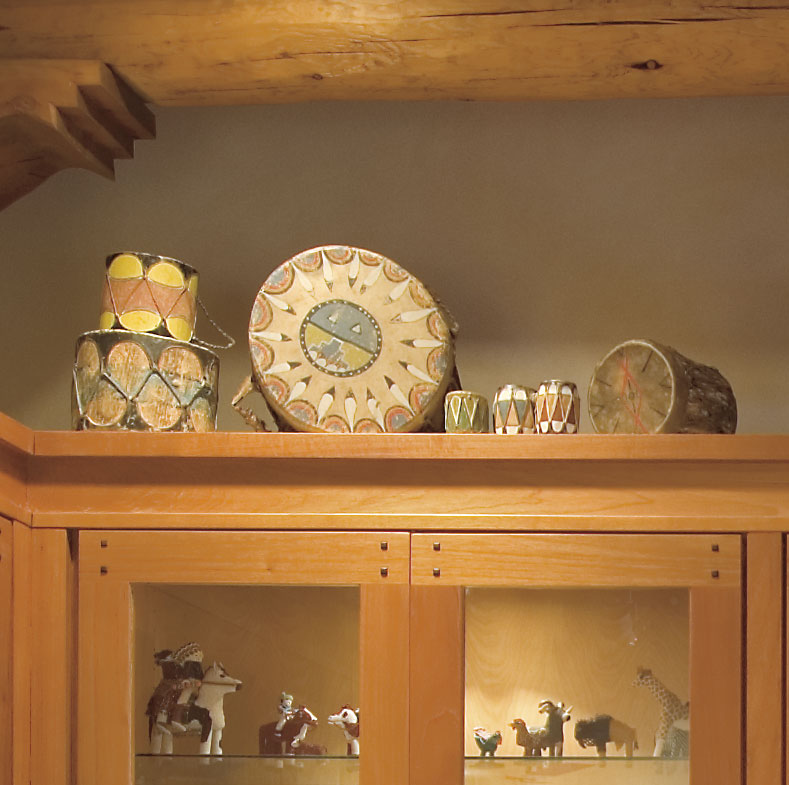

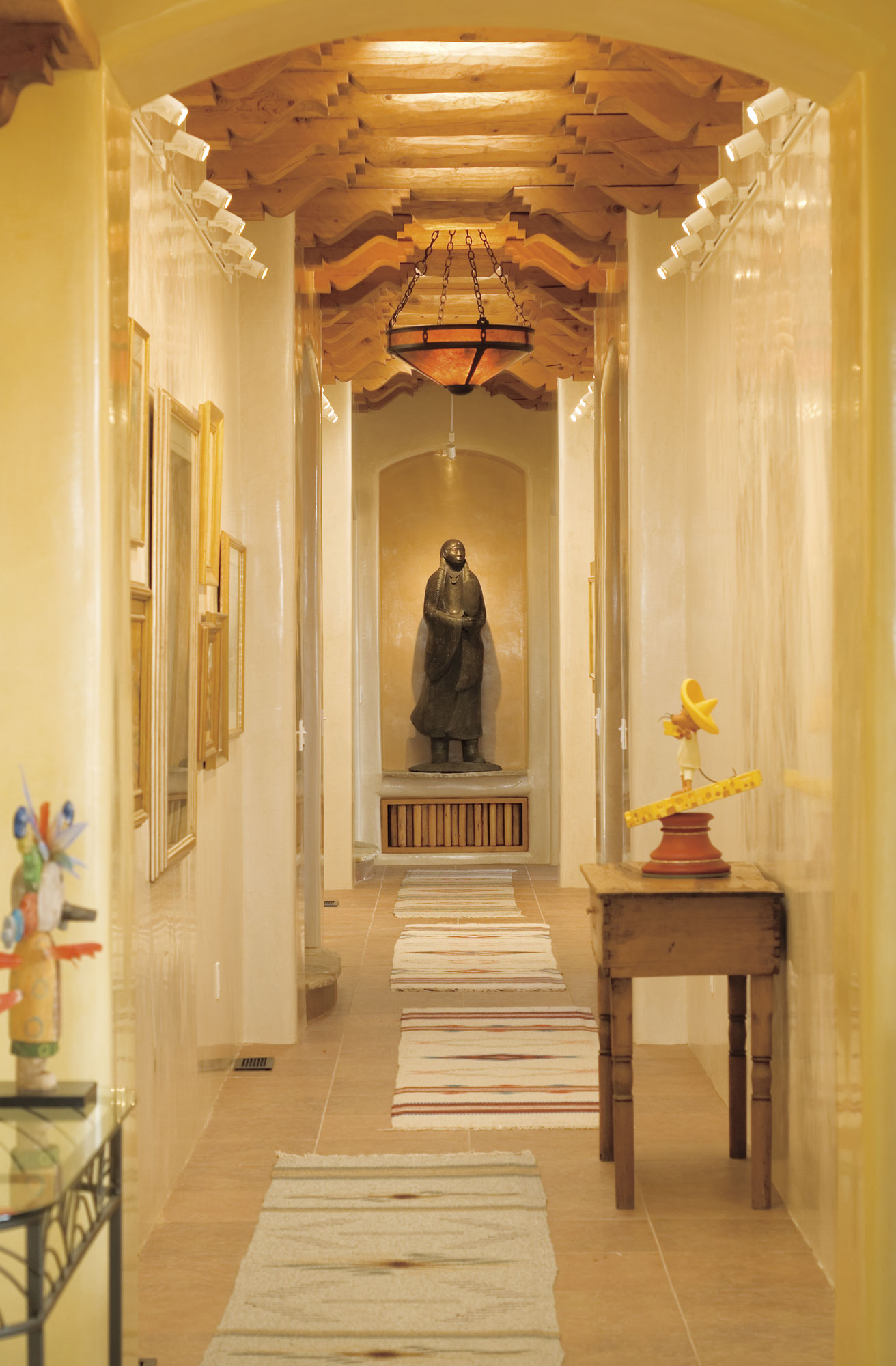
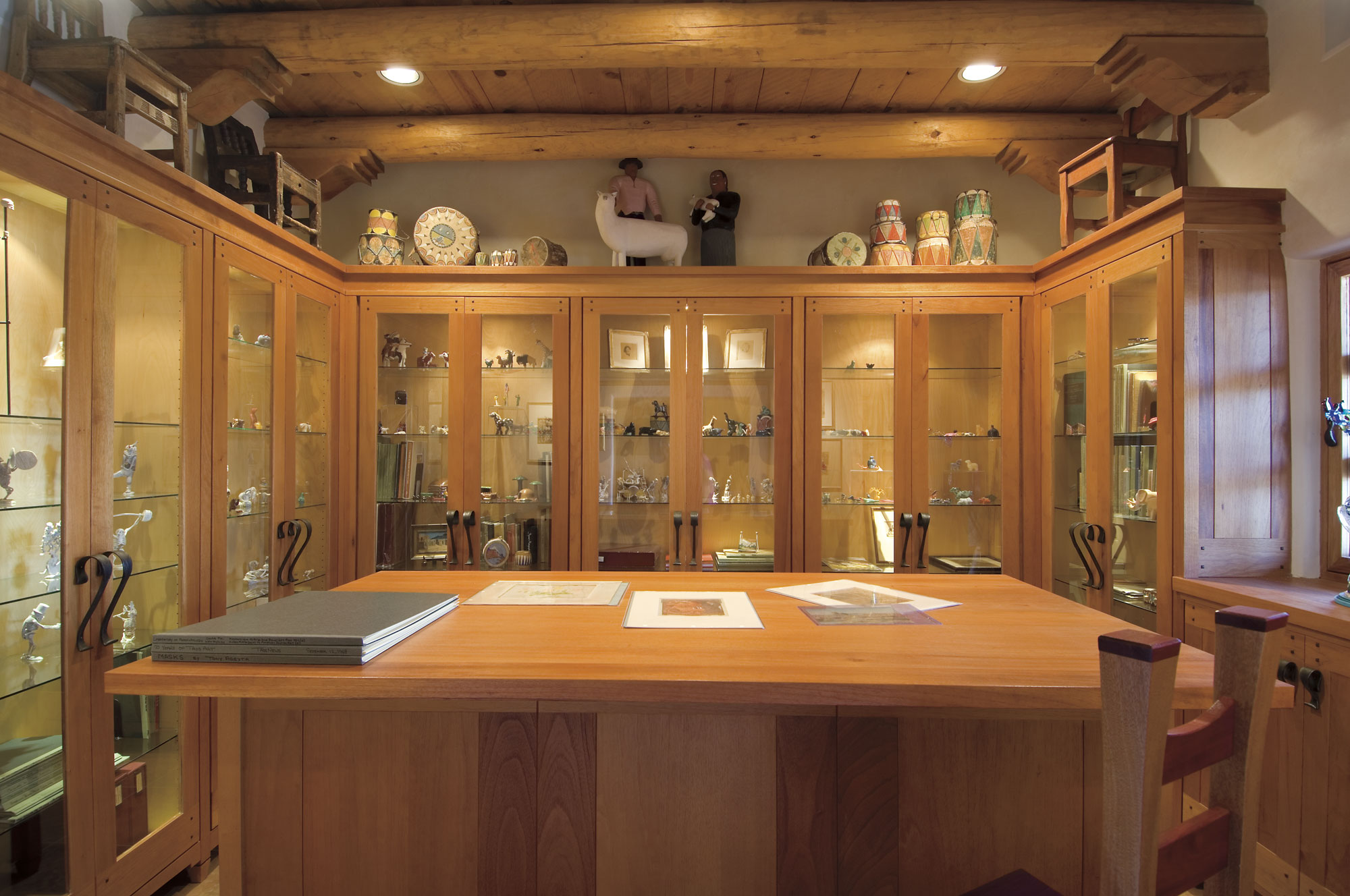
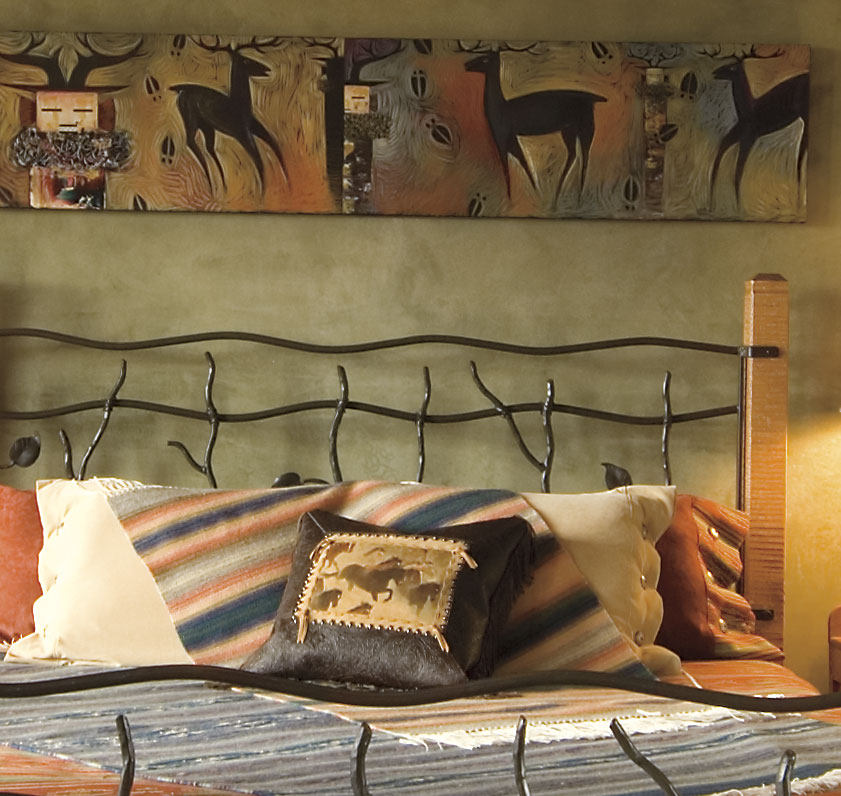
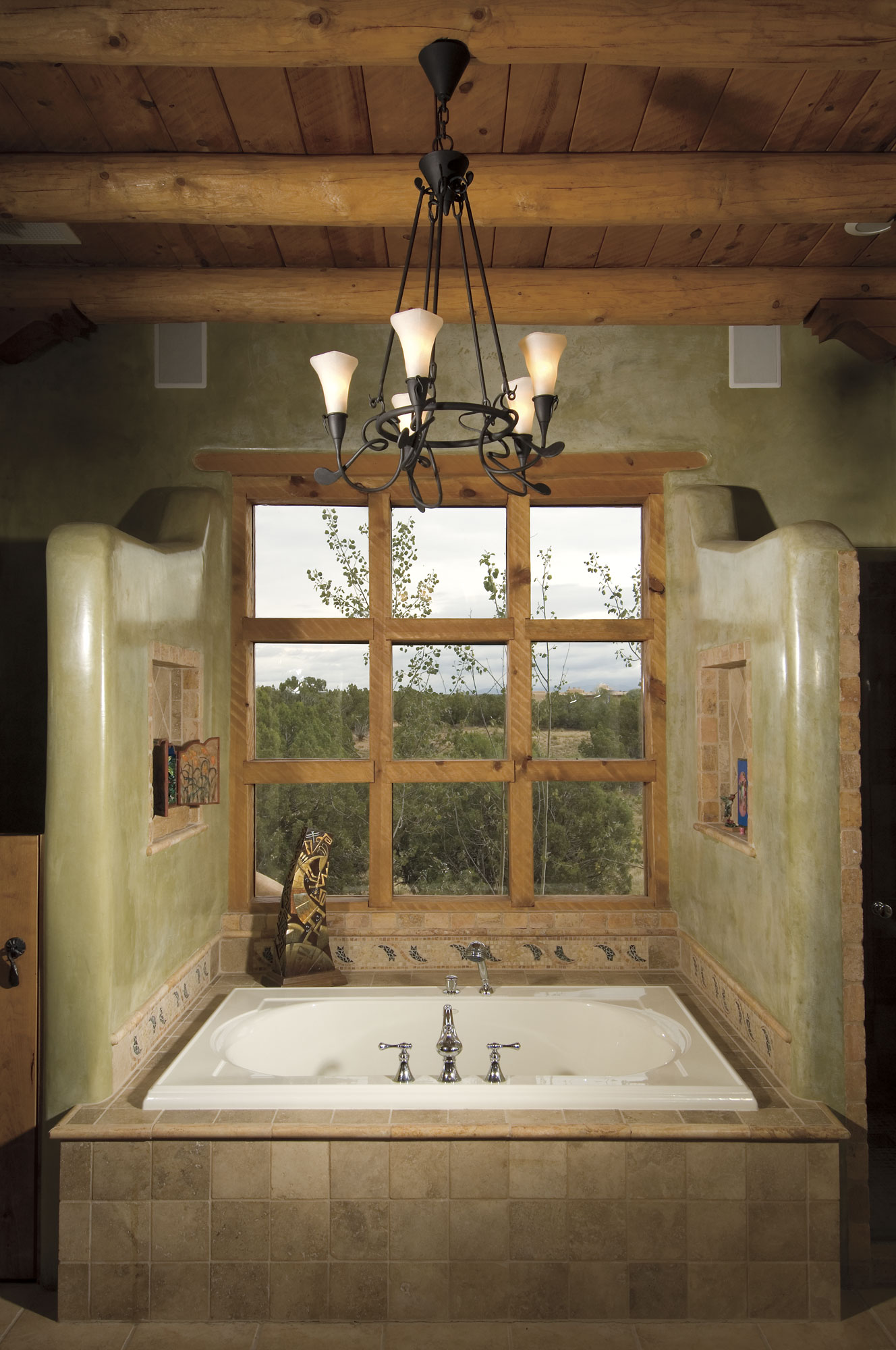
No Comments